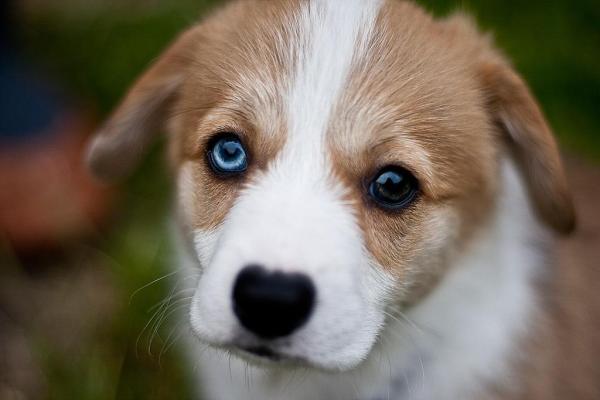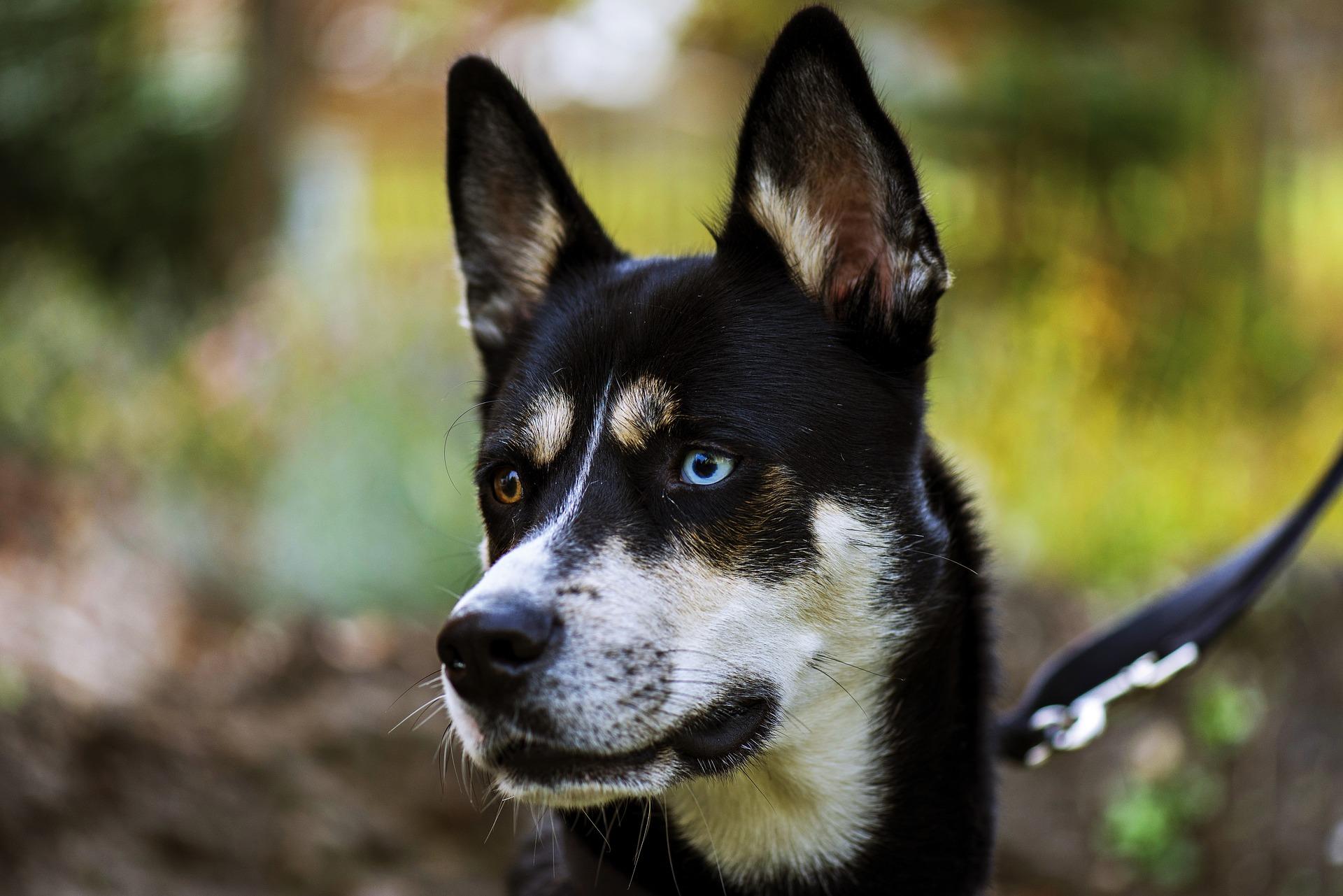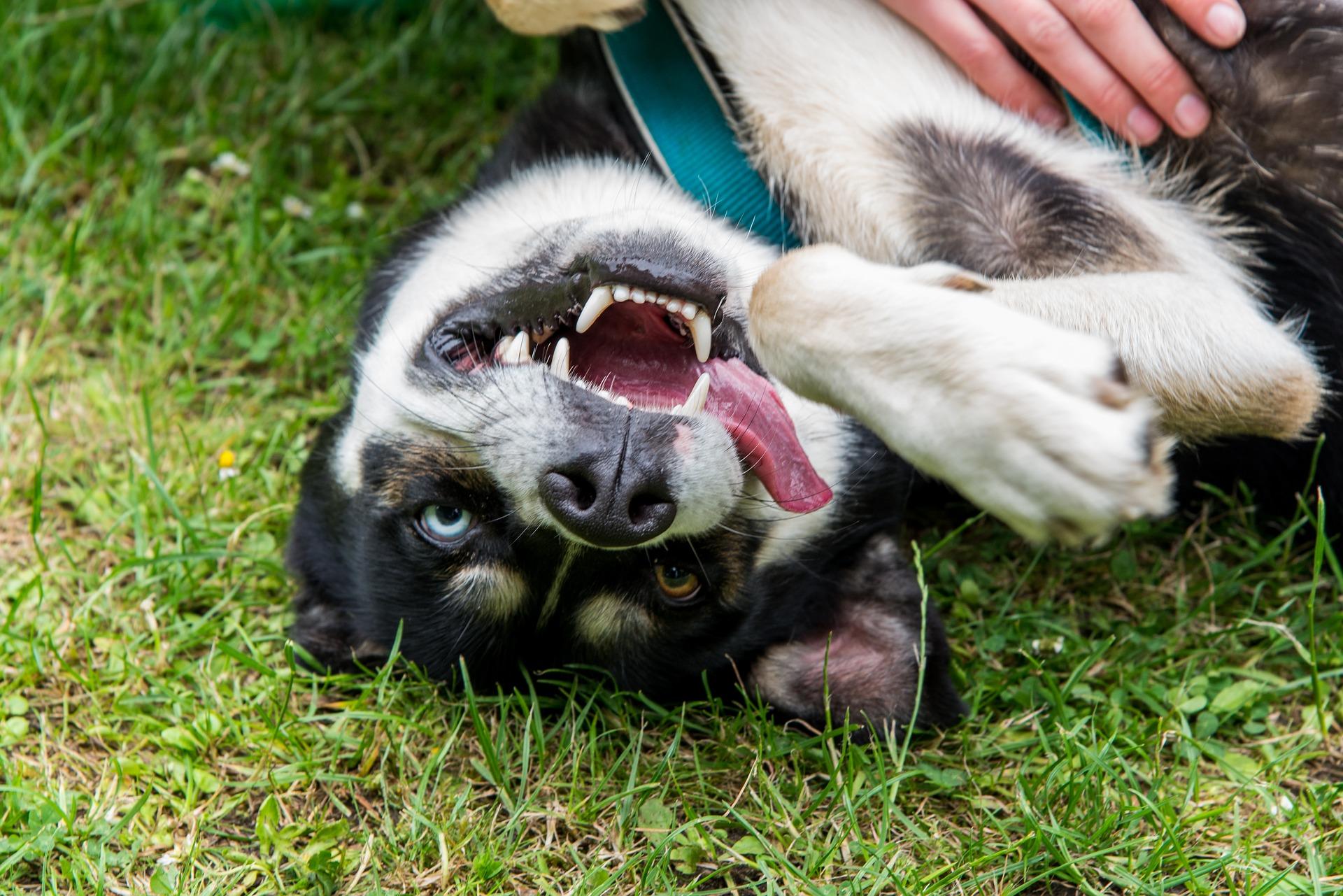How Common is Heterochromia in Dogs?



See files for Dogs
Looking into another pair of eyes can be an intense experience. We call them the window to the soul for a reason. If a person has eyes of two different colors, the effect can be magical. When a dog displays this feature, the impression is no less enchanting. The medical terminology for this phenomenon is heterochromia. Reports of its existence date back to antiquity as it is believed the historical figure Alexander the Great had the condition. Perhaps due to its uniqueness, it is something many dog lovers would like to see in their companion, despite being considered a fault by most dog standardization bodies.
It is not believed that all dogs can possess heterochromia which is why AnimalWised asks how common is heterochromia in dogs? We also look into some other aspects of this ocular condition.
Heterochromia in dogs
The word heterochromia derives from the Greek héteros (meaning ‘different’) and chróma (meaning ‘color’). In different animals in can be related to eye, hair or skin being of different colors. If we are speaking of eyes being of two different colors, then the condition is known as either heterochromia iridum or heterochromia iridis.
The reasons for the different coloration of the two eyes is due to the mount of melanocytes in the iris of the eye. Melanocytes are the protective cells of melanin, essentially the pigmentation of the eye. Melanin is also present in hair and skin which provides color pigmentation for animals.
There are different causes of heterochromia in dogs, something which has led to the condition being categorized into different types. The two main categories are inherited or acquired. In inherited heterochromia, the condition has been passed through genetic information, something which can be related to breed. For acquired heterochromia, a secondary condition or disease has led to the different coloration of the dog's eyes. This is likely related to an eye disease such as entropion.
Heterochromia is further categorized by the patterns of coloration into:
- Complete heterochromia: this is when the entire iris of one eye is a different color to the iris of the other eye.
- Sectoral heterochromia: sometimes known as partial heterochromia, this is when parts of the same iris bear different colors.
- Central heterochromia: similar to sectoral heterochromia, this is when the center of the iris is a different color to the mid-section. The pattern is seen in concentric circles.
Heterochromia of the eyes is present in many animals, with at least one study performed on water buffaloes showing similar features to those in dogs[1]. The same study showed that the melanocytes in certain layers of the iris were fewer, meaning it is thinner than a normal eye. A thinner iris does not, however, mean the eyesight of the dog will be affected.
Some studies have shown that a lighter iris color can increase certain melanomic cancers due to the increased exposure of UV radiation[2]. Since heterochromia in dogs usually results in one eye color being much lighter than the other, it may increase the risk of eye damage. If the dog has acquired heterochromia, then the damage is likely already done.
Does heterochromia affect all dogs?
Unlike humans, genetic inheritance of heterochromia in dogs is much more common than acquired heterochromia[3]. It is difficult to tell just how common is heterochromia in dogs since there is a lack of data. What we do know is that there are certain breeds which are more likely to inherit the condition genetically.
Dogs which most commonly acquire complete heterochromia include:
- Siberian Husky
- Australian Shepherd
- Catahoula Leopard Dog
It is important to note that by the standards of the American Kennel Club (AKC) and the Fédération Cynologique Internationale (FCI), having heterochromia of one blue and one brown eye is allowed. In the United Kennel Club, the Catahoula Leopard Dog can have any combination of eye color. The Australian Shepherd can be completely brown, blue or amber, as well as a combination thereof. However, this is not the case for all dogs.
Another problem in determining how common is heterochromia in dogs is the need to differentiate between acquired and inherited heterochromia. If a dog is not a breed with a predisposition toward it, then it is unlikely they will have it. However, acquired heterochromia can occur due to many different conditions, meaning it is impossible to tell if they will develop the condition. Acquired heterochromia is unlikely to affect the eye completely, so having a dog with eyes of two different colors is very unlikely unless they were born like that.
It is also important to remember that, since heterochromia is often genetically inherited in dogs, the genes can be passed on, regardless if the dog is purebred. Mixed breed dogs can also exhibit heterochromia, but it is only likely if they have heritage from one of the breeds which most commonly exhibit this trait.

Dogs with one blue and one brown eye
The merle gene is is responsible for the blue color in the iris, as well as the ‘butterfly’ pigmentation of certain dog's noses. The merle gene is related to heterochromia, for both partial and complete types. The reason for the proliferation of this gene is because breeders like the coat patterns. They breed dogs in a way to make it more likely they will pass on certain genetic information. Unfortunately, if a dog has a merle coat and heterochromia, they are more likely to suffer deafness and potentially other health problems[4].
The Australian Shepherd is one dog prone to having merle coat patterns, so too are dogs such as the Pembroke Welsh Corgi. Albinism and spots around the eyes are also related to this condition. The features of these animals can be distinctive and unique, but we need to be careful. Crossbreeding too closely can relate in conditions such as double dapple breeding.

Dogs with partial heterochromia
While genetically inherited complete heterochromia is likely in only a few breeds, partial heterochromia is slightly more widespread. In partial heterochromia, there are several colors in the one iris. This is common in dogs which can carry the merle gene, including:
- Catahoula Leopard Dog
- Pembroke Welsh Corgi
- Australian Cattle Dog
- Great Dane
- Border Collie
- Dachshund
The result of partial coloration is due to recessive genes of the D or B series. The result is a dilution of melanin which causes yellow-green or yellow-gray shades. The merle gene dilutes random pigments in the eyes and nose, resulting from a loss of pigment in the coat. It is important to note that the Siberian Husky is a non-merle breed which can show partial heterochromia.

Heterochromia in dogs mythology
There are different legends about dogs with different colored eyes. According to some Native American traditions, dogs with different colored eyes protect the sky and earth at the same time.
Another ancestral story suggests that, while dogs with heterochromia protect humanity, those with brown or amber eyes protect the spirits. Eskimo legends have suggested they believed dogs with this eye color were faster at pulling sleds than others.
The truth is that dogs with different colored eyes have genetic differences. These differences can occur spontaneously in breeds such as the Dalmatian, Pit Bull Terrier, English Cocker Spaniel, French Bulldog or Boston Terrier. While the legends around heterochromia show that it has occurred for centuries, it is not common in breeds not mentioned in this article.

If you want to read similar articles to How Common is Heterochromia in Dogs?, we recommend you visit our Facts about the animal kingdom category.
1. Misk, N. A., Semeika, M. A., & Fathy A. (1998). Heterochromia Iridis in Water Buffaloes (Bubalus bubalis). Veterinary Ophthalmology, 1(4), 195-201.
https://www.researchgate.net/publication/258276408_Heterochromia_iridis_in_water_buffaloes_Bubalus_bubalis
2. Schmidt-Pkrzywniak, A., et al. (2009). Positive Interaction Between Light Iris Color and Ultraviolet Radiation in Relation to the Risk of Uveal Melanoma: A Case-control Study. Ophthalmology, 116(2), 340-348.
https://www.ncbi.nlm.nih.gov/pubmed/19091418
3. Folse, H. (2018). What Causes Heterochromia? Retrieved on November 26, 2019, from
https://genetics.thetech.org/ask-a-geneticist/heterochromia
4. Webb, A. A., & Cullen, C. C. (2010). Coat Color and Coat Color Pattern-Related Neurologic and Neuro-Ophthalmic Diseases. Can Vet J, 51(6), 653-657.
https://www.ncbi.nlm.nih.gov/pmc/articles/PMC2871368/
1. American Kennel Club. (n.d.) Siberian Husky. Retrieved on November 26, 2019, from
https://www.akc.org/dog-breeds/siberian-husky/
2. United Kennel Club. (n.d.) Louisiana Catahoula Leopard Dog. Retrieved on November 26, 2019, from
https://www.ukcdogs.com/louisiana-catahoula-leopard-dog








